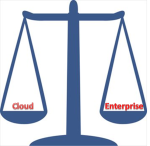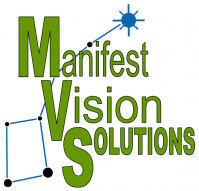Big Data-OK; Master Data Management–Yes; Critical Data Leverage–Absolutely!
October 31, 2012 1 Comment
This world of big data and analytics has somewhat overshadowed the data foundation that makes organizations run. Even the concepts of Master Data Management (MDM) and Data Governance sometimes mask the base that lies at the heart of doing business. Consider the following two scenarios:
Program 1 – Master Data Management (MDM)
A group of people from each functional area was brought together to determine the data needed to understand their business. Each was concerned that the data they cared most about was included in the data governance and maintenance process. While the group defined the core data elements that would tie all their individual pieces together, their main focus was to ensure that they could get the reporting that they wanted to run their function. The end result was a heavily attributed master data hub surrounded by complex integrations that was easily accessed and centrally maintained by the data stewards from each function. The data was then supplied (duplicated and/or transformed) to the reporting and analytics engines to deliver to the reporting requirements of each individual function and ultimately the needs of the corporation as a whole. This was more of a metrics/KPI /reporting based approach.
Program 2 – Critical Data Leverage (CDL)
A group of people from each functional area associated with the end-to-end business processes was brought together to determine the data attributes that drove the behavior of the company’s business. They were concerned that their company presented a consistent face to their customers at all times while managing their job functions. These people discussed (argued even) about the data used to segment customers, group offerings, drive the go-to-market strategy, determine geographical differences and so on. The end result was a small data steward team that governed the core data for the company as a whole. They managed the master data hub that integrated that core data to all consuming applications and the reporting and analytics engines. Each of the functions delivered their own reporting and fed the analytics engines to meet the needs of the corporation as a whole. This was more of an operations based approach.
Each of these approaches delivered the data foundation to tie the functions of the organization together and enable reporting and analytics. I have participated on programs that have used each of these approaches and I believe that critical data leverage comes first and master data management follows. In my experience the groups who used the critical data leverage approach created a more flexible and scalable foundation for their company to grow on and met their functional requirements as well. The metrics and KPIs came out of the operational model as opposed to the KPIs driving the operational requirements. Be careful what you measure, because that is what you will get; better perhaps to know where you’re going before determining how to measure if you got there (this kind of resembles the system integration cart being before the transformation horse ). At the core, know what data drives your organization.
Even with analytics, big data and the desire to discover unknown patterns, it is still important to have a purpose behind the quest. There is a difference between data, information, knowledge, understanding and wisdom. What you’re looking for is wisdom to make better decisions; big data is a method to provide you some understanding based on the knowledge of the information and data that’s out there. The question is what do you want to be wise about?
Maybe we should be talking about Critical Data Leverage, Master Information Management and Big Knowledge.
© Ellen Terwilliger 2012
Related articles
- Gartner IT/Expo 2012 Trip Report Day 4 (blogs.gartner.com)
- The difference between Master Data Management and Information Governance? (blogs.gartner.com)





